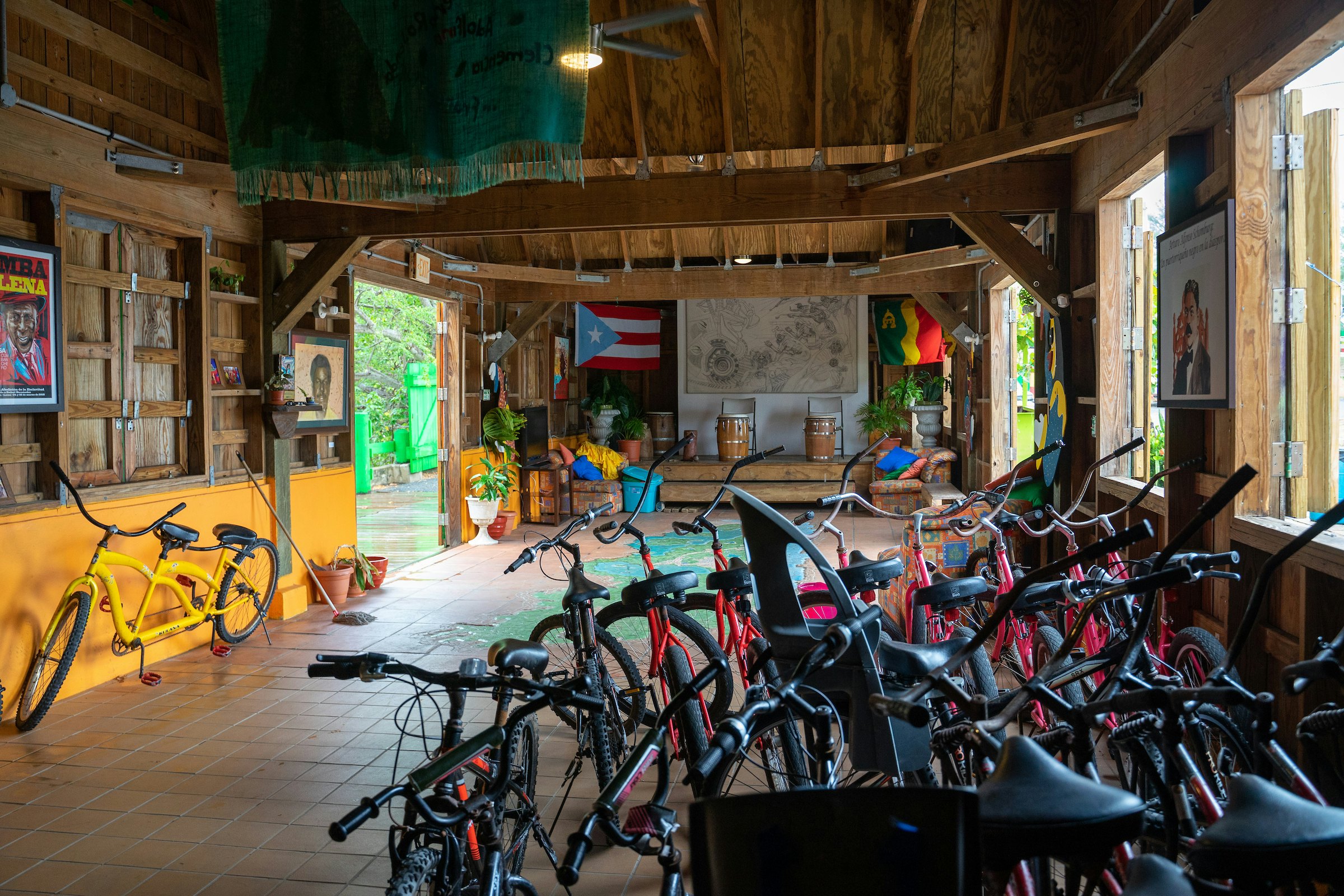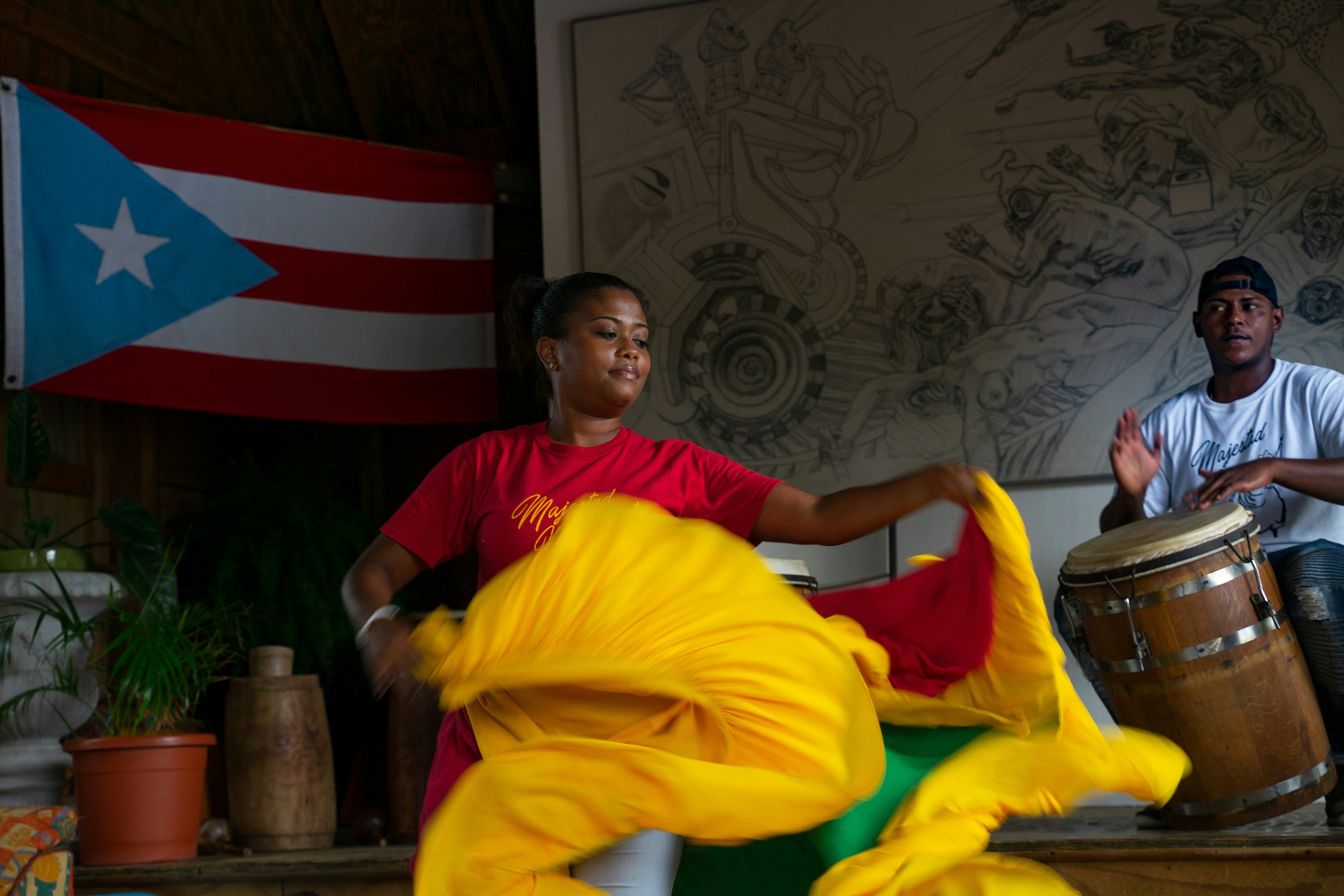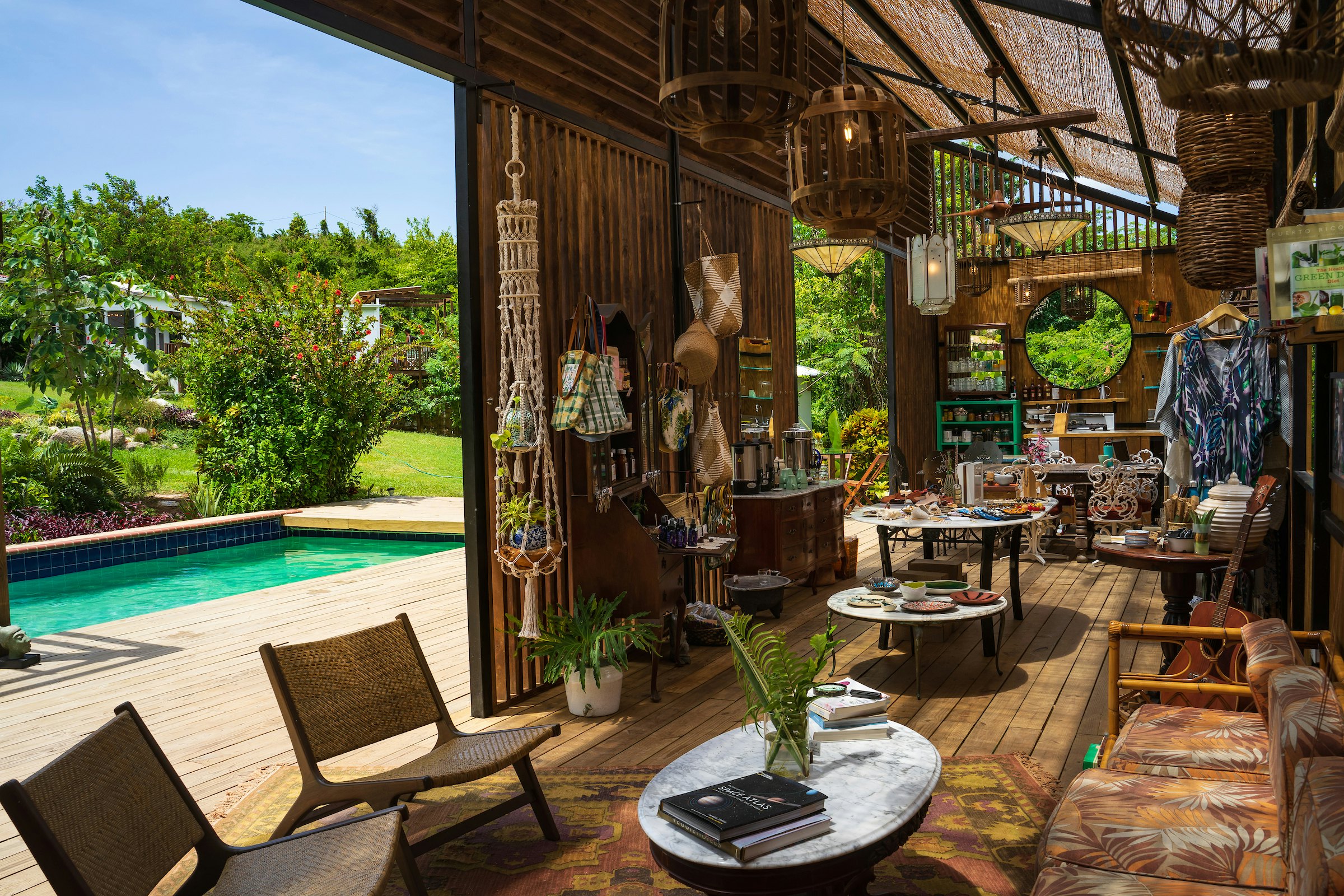

The view from Cueva Ventana, Puerto Rico © IsaacRuiz / Getty
From small, farm-sourced restaurant menus to guesthouse stays, community tours and Afro-Puerto Rican cultural workshops, Puerto Rico is strengthening its sustainable tourism scene.
Beyond the major hotels and natural sights that have reopened since COVID-19 and Hurricane Maria, there is a significant shift in mindset wherein local experiences and cultural immersion are taking center stage, including a big push to preserve or create all that’s homegrown on la isla.
Here's a guide to traveling Puerto Rico sustainably.

1. Food hop in Old San Juan
Sign up for a three-hour walk with Spoon Food Tours and get to know locals’ favorites for coffee, snacks and meals served at family-run businesses that continue to thrive in gentrified Old San Juan.
The morning kicks off at Don Ruiz Coffee Shop – tucked inside the Cuartel de Ballaja, a former military barracks turned cultural center and shopping courtyard, across El Morro Fortress. Try the mallorca – a sweet and savory pastry stuffed with toasted ham and cheese, sprinkled with powdered sugar – and wash it down with a cup of single origin coffee harvested from the 19th-century Ruiz plantation 3000ft above sea level in the mountains of Yauco. While Hurricane Maria destroyed 70 percent of the plantation's crops, it has been replanting coffee trees.
Learn about the historical context of food in San Juan and elsewhere in Puerto Rico before and after Maria, as you sample iconic dishes like slow-roasted pork, served at a traditional ‘fonda’ – a family-owned restaurant where the owner can be seen behind the kitchen counter, cooking from her grandmother’s recipes. In-season fresh fruit juices and desserts from a chinchorro or local snack bar are also part of this culinary deep dive.

2. Immerse in Afro-Puerto Rican culture in Loíza
The seaside town of Loíza in the Piñones region, a 20-minute drive east of San Juan, is known as the heart of Afro-Puerto Rican culture and the birthplace of bomba. Head straight to the Corporación Piñones Se Integra (COPI) non-profit organization’s community center, located at the entrance to town.
Its outdoor murals are hard to miss, featuring Afro-boricua women in colorful headwraps and voluminous dresses, while the interior shines with an open floor space and stage for year-round bomba dancing and drumming workshops. At the back, a lagoon-facing boardwalk attracts iguanas, hikers and bikers.
As COPI founder, sociologist and activist Maricruz Rivera Clemente explains to visitors, bomba isn’t just a folkloric dance – it's ancestral heritage, a form of spirituality and a language that unites Afro-Caribbean people.
When you sign up for a bomba workshop with COPI, rather than tour operators offering the activity elsewhere to attract tourists, it ensures you'll receive accurate information on the history of Loiza, as well as an understanding of the past and present socio-political struggles of marginalized Black Puerto Rican communities in Puerto Rico.It also means your travel dollars directly benefit COPI’s cultural preservation work and its role as a support and educational system for current and future Afro-boricua generations in Piñones.

After a historical introduction, it’s time for lunch. You could choose from any of the roadside kiosks lining Loiza’s main road, but a great pick is the seaside Mi Casita restaurant serving alcapurrias – deep-fried yucca-based fritters stuffed with meat – and sweet-plantain mofongo stuffed with fish, chicken or seafood.
Women will change into traditional skirts post-lunch for the bomba workshop, where you’ll learn the various rhythms and steps performed in response to live drummers. Drumming lessons are also available at COPI, as well as rental bikes to explore the boardwalk.
3. Join Local Guest’s community experiences
A women-led social enterprise and tour company, Local Guest offers immersive experiences around the island, headed by local groups and entrepreneurs. Founders Carmen Portela and Monica Perez’s aim is to decentralize mass tourism in Puerto Rico and direct visitors towards culture and nature-rich communities, in turn providing the areas with a sustainable income.
Unique experiences include caving in Morovis, taking a Taino pottery workshop or kayaking Puerto Rico’s longest river Rio La Plata. Local Guest also runs a non-profit arm, which matches small volunteer groups with a variety of established community-based organizations’ ongoing restoration projects for long-term impact.

4. Stay at an organic farm on Vieques
An encouraging departure from larger hotels eyeing the island post-Maria, the new Puerto Rican owned Finca Victoria is a two-and-a-half-acre botanical farm guesthouse tucked in the hills at the heart of the island.
A 10-minute drive to Vieques’ stunning beaches, this renovated, eco-conscious property oozes relaxation, from its natural pool-facing wooden communal house to its medicinal plant garden. Think complimentary yoga on the sundeck every morning plus local farm-sourced vegetarian breakfasts, while cottage suites boast king-size beds, outdoor showers, ready-to-go beach bags, organic made-in-Puerto Rico bath products and your own porch with a mini-organic garden growing herbs and fruits.
There’s a treehouse for the adventurous, plus a shop selling a collection of jewelry, beauty products and arts and crafts all made by Puerto Rican talent.

5. Explore Calle Loiza's farm-to-table dining scene
The island’s over 90% dependence on food exports became evident when Maria struck. Since then, a consciousness has taken root to collaborate with local farmers in growing or recovering crops and to source locally where possible. One of the most popular areas where this farm-to-table movement is visible is Calle Loiza in San Juan, where fresh dining options have popped up.
Grab breakfast at Tostado*, which features a menu that’s locally sourced and organic, from the sourdough bread to the goat cheese – an improbability as recently as five years ago.
The Dreamcatcher hosts a four-course, locally sourced vegan dinner series every month – reserve your table ahead of time – and features rotating local chefs who whip up plates like fried rice with Asian orange sesame cauliflower while you watch.
You might also like:
Puerto Rico's 7 best hiking trails
Top 12 beaches in Puerto Rico
East End Puerto Rico, the perfect San Juan alternative












